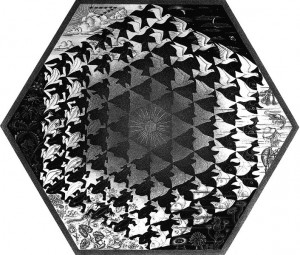 Mandala is the Sanskrit word for circle or disk. Traditional mandalas have been used in Hinduism and Buddhism for hundreds of years. These mandalas are typically drawn by trained Monks and used as an aid to individual meditation.
Mandala is the Sanskrit word for circle or disk. Traditional mandalas have been used in Hinduism and Buddhism for hundreds of years. These mandalas are typically drawn by trained Monks and used as an aid to individual meditation.
Non-traditional mandalas were made popular in the West by Psychiatrist Carl Jung in the early 1900s. Non-traditional or Western mandalas differ from traditional Eastern Mandalas. They are created by an individual reflecting on their self. Essentially, the Western Mandala gives a visual representation of the individual’s thoughts, both at a conscious and at an unconscious level. Sort of a snapshot of a person’s whole mind at a given point in time. The circular format allows the creator of the mandala to place a central focus point in the composition to which everything relates.
Escher created a series of Western Mandalas during the latter half of his life. In Escher’s case, I believe his mandalas express concepts which he was thinking and reflecting on over a long period of time.
Escher writes in a letter to B. Merema: “I believe that every artist, in the final analysis, wants nothing other than to tell his fellow men what he has on his mind.” This is what Western Mandalas enable.
We come to the 1942 print Verbum. This composition is in the shape of a hexagon, but it captures the characteristics of a mandala. It is essentially a mandala of Creation.
About 16 years early Escher created a series of six prints, one for each day of the biblical account of Creation. In this later seventh print on Creation, Escher harmonizes the six days of creation around a central focus point. Beginning at the center of the mandala we find six triangles. The triangle is the Christian symbol of the Trinity. Six is the Christian number commonly used for Creation. Overlaid on top of the six triangles is the word Verbum. Verbum is Latin for ‘The Word’ with rays radiating outward from the word verbum. In short, we have ‘The Word’ in the center of Escher’s mandala.
John 1:1-5 (ESV)
1 In the beginning was the Word, and the Word was with God, and the Word was God. 2 He was in the beginning with God. 3 All things were made through him, and without him was not any thing made that was made. 4 In him was life, and the life was the light of men. 5 The light shines in the darkness, and the darkness has not overcome it.
In Escher’s sketchbook, Regelmatige vlakverdeling, he refers to the Verbum print as: “In the beginning was the Word.” In essence, he has Christ in the center of the mandala as the focal point and agent of creation.
Look how the print moves out from the center. The word, verbum, is bounded by a hexagon formed out of six triangles. The six triangles morph as we move radially outward in the print becoming fish in the sea, frogs on the land, and birds in the sky. We note two lights, a sun to rule the day and a moon to rule the night. There is water, land, vegetation, clouds and a sky. Creation expands out from ‘The Word’ who was in the beginning, who was God, and who is Jesus Christ.
This is an independent creation by Escher. He was not paid to create it. Escher is a man who found nature very beautiful. He is also a man who loved order. It is not surprising that he would have made an artistic statement that harmonized Creation, order, and beauty.
The print also appears to recognize Christ as the agent of Creation. In part 5 we will look at Escher’s later mandalas.
